Komatiite
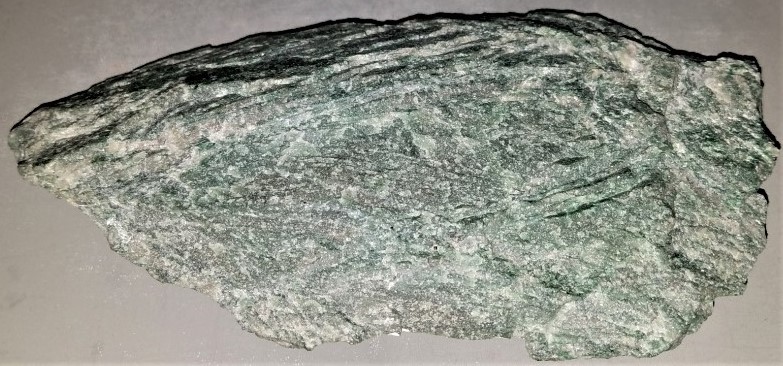
Photographed by Michael P. Klimetz
[Olivine Spinifex Texture Altered to Fuchsite and Serpentine]
Abitibi Greenstone Belt
Kerr-Addison Mine
Timiskaming County
Ontario
CANADA
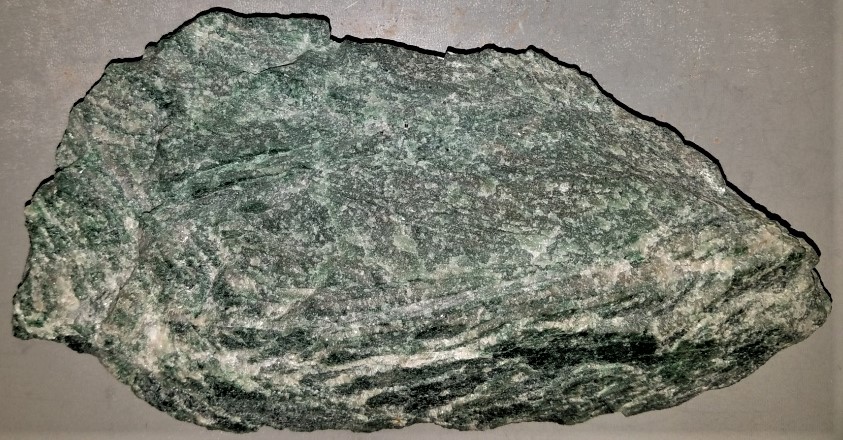
Photographed by Michael P. Klimetz
[Olivine Spinifex Texture Altered to Fuchsite and Serpentine]
Abitibi Greenstone Belt
Kerr-Addison Mine
Timiskaming County
Ontario
CANADA
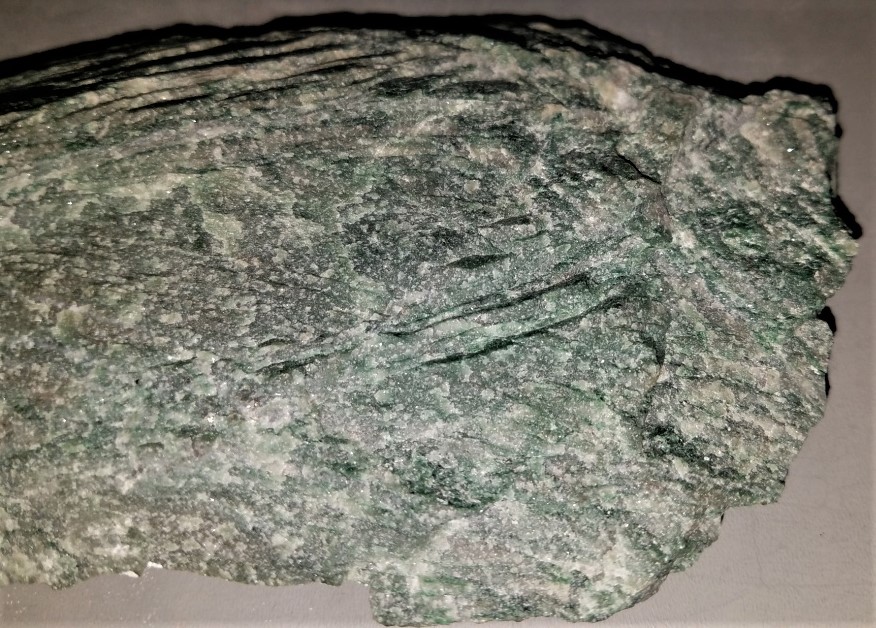
Photographed by Michael P. Klimetz
[Olivine Spinifex Texture Altered to Fuchsite and Serpentine]
Abitibi Greenstone Belt
Kerr-Addison Mine
Timiskaming County
Ontario
CANADA
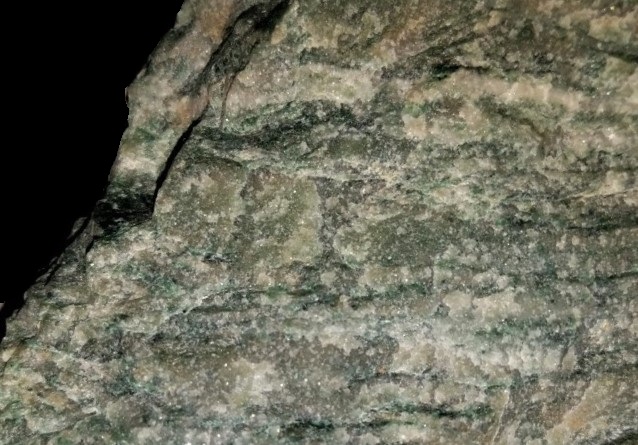
Photographed by Michael P. Klimetz
[Olivine Spinifex Texture Altered to Fuchsite and Serpentine]
Abitibi Greenstone Belt
Kerr-Addison Mine
Timiskaming County
Ontario
CANADA

Photographed by Michael P. Klimetz
[Olivine Spinifex Texture Altered to Fuchsite and Serpentine]
Abitibi Greenstone Belt
Kerr-Addison Mine
Timiskaming County
Ontario
CANADA
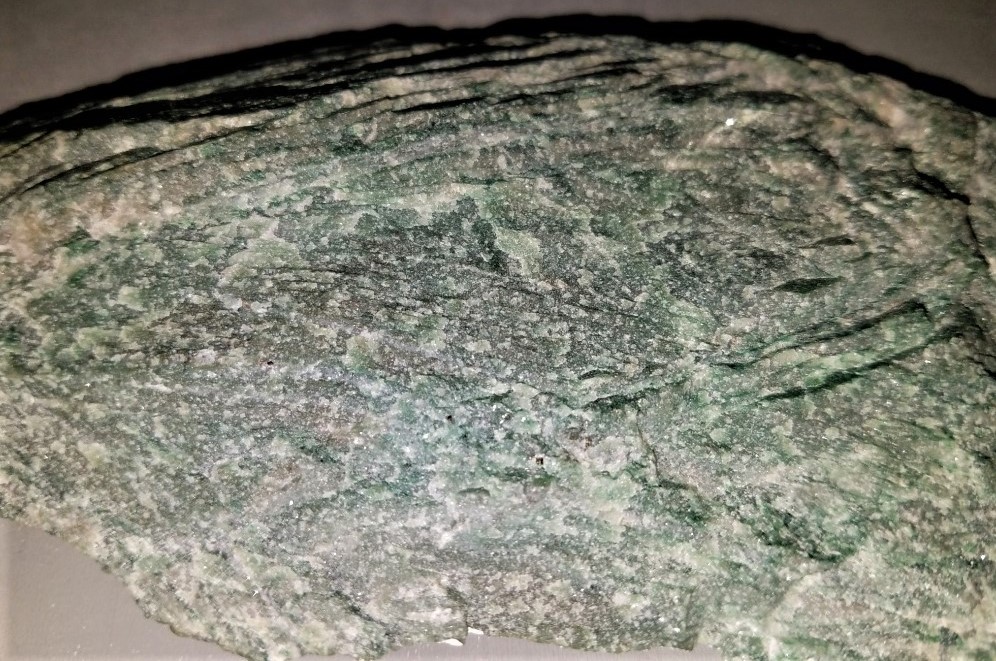
Photographed by Michael P. Klimetz
[Olivine Spinifex Texture Altered to Fuchsite and Serpentine]
Abitibi Greenstone Belt
Kerr-Addison Mine
Timiskaming County
Ontario
CANADA
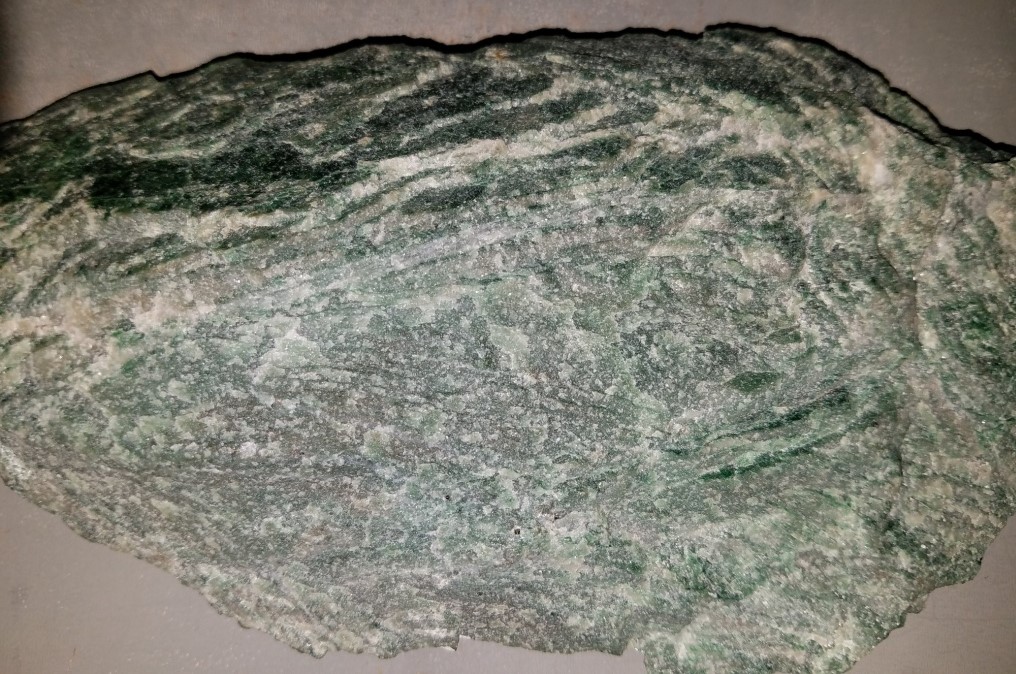
Photographed by Michael P. Klimetz
[Olivine Spinifex Texture Altered to Fuchsite and Serpentine]
Abitibi Greenstone Belt
Kerr-Addison Mine
Timiskaming County
Ontario
CANADA
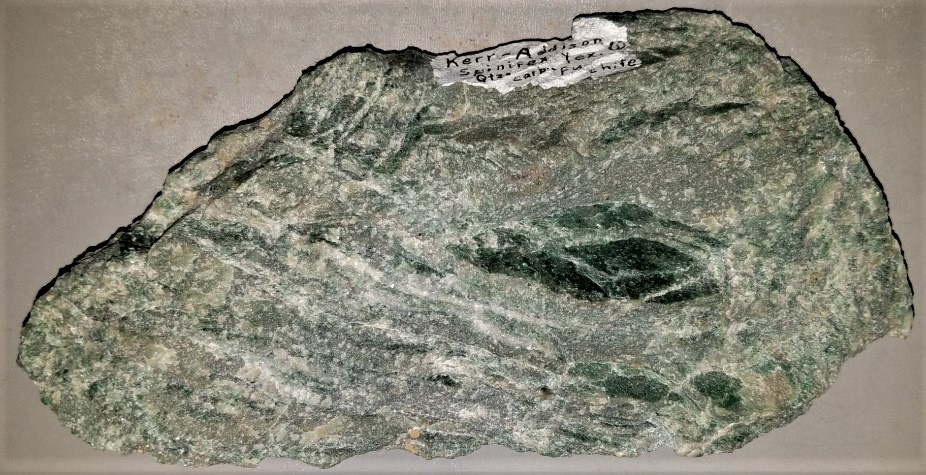
Photographed by Michael P. Klimetz
[Olivine Spinifex Texture Altered to Fuchsite and Serpentine]
Abitibi Greenstone Belt
Kerr-Addison Mine
Timiskaming County
Ontario
CANADA
Komatiite is a type of ultramafic mantle-derived volcanic rock defined as having crystallized from a lava with ≥ 18 wt.% MgO. Komatiites have low silicon, potassium and aluminum, and high to extremely high magnesium content. Komatiite was named for its type locality along the Komati River in South Africa, and frequently displays spinifex texture composed of large dendritic plates of olivine and pyroxene. Komatiites are rare and predominantly found in rocks of Archean age, with few Proterozoic or Phanerozoic komatiites known. This restriction in age is thought to be due to cooling of the mantle, which may have been 100 – 250°C hotter during the Archean (4.0 to 2.5 billion years ago). The early Earth had much higher heat production, due to the residual heat from planetary accretion, as well as the greater abundance of radioactive elements. Lower temperature mantle melts such as basalt and picrite have essentially replaced komatiites as an eruptive lava on the Earth's surface. Geographically, komatiites are predominantly restricted in distribution to the Archean shield areas, and occur with other ultramafic and high-magnesian mafic volcanic rocks in Archean greenstone belts. The youngest komatiites are from the island of Gorgona on the Caribbean oceanic plateau off the Pacific coast of Colombia, and a rare example of Proterozoic komatiite is found in the Winnipegosis komatiite belt, Manitoba, Canada. Magmas of komatiitic compositions have a very high melting point, with calculated eruption temperatures up to, and possibly in excess of 1600 °C. Basaltic lavas normally have eruption temperatures of about 1100 to 1250 °C. The higher melting temperatures required to produce komatiite have been attributed to the presumed higher geothermal gradients in the Archean Earth. Komatiitic lava was extremely fluid when it erupted (possessing the viscosity close to that of water but with the density of rock). Compared to the basaltic lava of the Hawaiian plume basalts at ~1200 °C, which flows similar to honey, the komatiitic lava would have flowed swiftly across the surface, leaving extremely thin lava flows (down to 10 mm thick). The major komatiitic sequences preserved in Archean rocks are thus considered to be lava tubes or ponds where the komatiitic lava accumulated. Komatiite chemistry is different from that of basaltic and other common mantle-produced magmas, because of differences in degrees of partial melting. Komatiites are considered to have been formed by high degrees of partial melting, usually greater than 50%, and hence have high MgO with low K2O and other incompatible elements. There are two geochemical classes of komatiite; aluminum undepleted komatiite (AUDK) (also known as Group I komatiites) and aluminum depleted komatiite (ADK) (also known as Group II komatiites), defined by their Al2O3/TiO2 ratios. These two classes of komatiite are often assumed to represent a real petrological source difference between the two types related to depth of melt generation. Al-depleted komatiites have been modeled by melting experiments as being produced by high degrees of partial melting at high pressure where garnet in the source is not melted, whereas Al-undepleted komatiites are produced by high degrees of partial melts at lesser depth. However, recent studies of fluid inclusions in chrome spinels from the cumulate zones of komatiite flows have shown that a single komatiite flow can be derived from the mixing of parental magmas with a range of Al2O3/TiO2 ratios, calling into question this interpretation of the formations of the different komatiite groups. Komatiites probably form in extremely hot mantle plumes. The pristine volcanic mineralogy of komatiites is composed of forsteritic olivine (Fo90 and upwards), calcic and often chromian pyroxene, anorthite (An85 and upwards) and chromite. A considerable population of komatiite examples show a cumulate texture and morphology. The usual cumulate mineralogy is highly magnesium rich forsterite olivine, though chromian pyroxene cumulates are also possible (though rarer). Volcanic rocks rich in magnesium may be produced by accumulation of olivine phenocrysts in basalt melts of normal chemistry: an example is picrite. Part of the evidence that komatiites are not magnesium-rich simply because of cumulate olivine is textural: some contain spinifex texture, a texture attributable to rapid crystallization of the olivine in a thermal gradient in the upper part of a lava flow. "Spinifex" texture is named after the common name for the Australian grass Triodia, which grows in clumps with similar shapes. Another line of evidence is that the MgO content of olivines formed in komatiites is toward the nearly pure MgO forsterite composition, which can only be achieved in bulk by Crystallization of olivine from a highly magnesian melt. The often rarely preserved flow top breccia and pillow margin zones in some komatiite flows are essentially volcanic glass, quenched in contact with overlying water or air. Because they are rapidly cooled, they represent the liquid composition of the komatiites, and thus record an anhydrous MgO content of up to 32% MgO. Some of the highest magnesian komatiites with clear textural preservation are those of the Barberton belt in South Africa, where liquids with up to 34% MgO can be inferred using bulk rock and olivine compositions. The mineralogy of a komatiite varies systematically through the typical stratigraphic section of a komatiite flow and reflects magmatic processes which komatiites are susceptible to during their eruption and cooling. The typical mineralogical variation is from a flow base composed of olivine cumulate, to a spinifex textured zone composed of bladed olivine and ideally a pyroxene spinifex zone and olivine-rich chill zone on the upper eruptive rind of the flow unit. Primary (magmatic) mineral species also encountered in komatiites include olivine, the pyroxenes augite, pigeonite and bronzite, plagioclase, chromite, ilmenite and rarely pargasitic amphibole. Secondary (metamorphic) minerals include serpentine, chlorite, amphibole, sodic plagioclase, quartz, iron oxides and rarely phlogopite, baddeleyite, and pyrope or hydrogrossular garnet. A common and distinctive texture is known as spinifex texture and consists of long acicular phenocrysts of olivine (or pseudomorphs of alteration minerals after olivine) or pyroxene which give the rock a bladed appearance especially on a weathered surface. Spinifex texture is the result of rapid crystallization of highly magnesian liquid in the thermal gradient at the margin of the flow or sill. Komatiite volcano morphology is interpreted to have the general form and structure of a shield volcano, typical of most large basalt edifices, as the magmatic event which forms komatiites erupts less magnesian materials. However, the initial flux of the most magnesian magmas is interpreted to form a channelized flow facie, which is envisioned as a fissure vent releasing highly fluid komatiitic lava onto the surface. This then flows outwards from the vent fissure, concentrating into topographical lows, and forming channel environments composed of high MgO olivine adcumulate flanked by a 'sheeted flow facies' aprons of lower MgO olivine and pyroxene thin-flow spinifex sheets.
The typical komatiite lava flow has six stratigraphically related elements;
• A1 – pillowed and variolitic chilled flow top, often grading and transitional with sediment
A1 – pillowed and variolitic chilled flow top, often grading and transitional with sediment
• A2 – Zone of quickly chilled, feathery acicular olivine-clinopyroxene-glass representing a
A2 – Zone of quickly chilled, feathery acicular olivine-clinopyroxene-glass representing a 
 chilled margin on the top of the flow unit
chilled margin on the top of the flow unit
• A3 – Olivine spinifex sequence composed of sheaf and book-like olivine spinifex, representing a downward-growing crystal accumulation on the flow top
A3 – Olivine spinifex sequence composed of sheaf and book-like olivine spinifex, representing a downward-growing crystal accumulation on the flow top
• B1 – Olivine mesocumulate to orthocumulate, representing a harrisite grown in flowing liquid melt
B1 – Olivine mesocumulate to orthocumulate, representing a harrisite grown in flowing liquid melt
• B2 – Olivine adcumulate composed of >93% interlocking equant olivine crystals
B2 – Olivine adcumulate composed of >93% interlocking equant olivine crystals
• B3 – Lower chill margin composed of olivine adcumulate to mesocumulate, with finer grain size.
B3 – Lower chill margin composed of olivine adcumulate to mesocumulate, with finer grain size.
Individual flow units may not be entirely preserved, as subsequent flow units may thermally erode the A zone spinifex flows. In the distal thin flow facies, B zones are poorly developed to absent, as not enough through-flowing liquid existed to grow the adcumulate. The channel and sheeted flows are then covered by high-magnesian basalts and tholeiitic basalts as the volcanic event evolves to less magnesian compositions. The subsequent magmatism, being higher silica melts, tends to form a more typical shield volcano architecture.